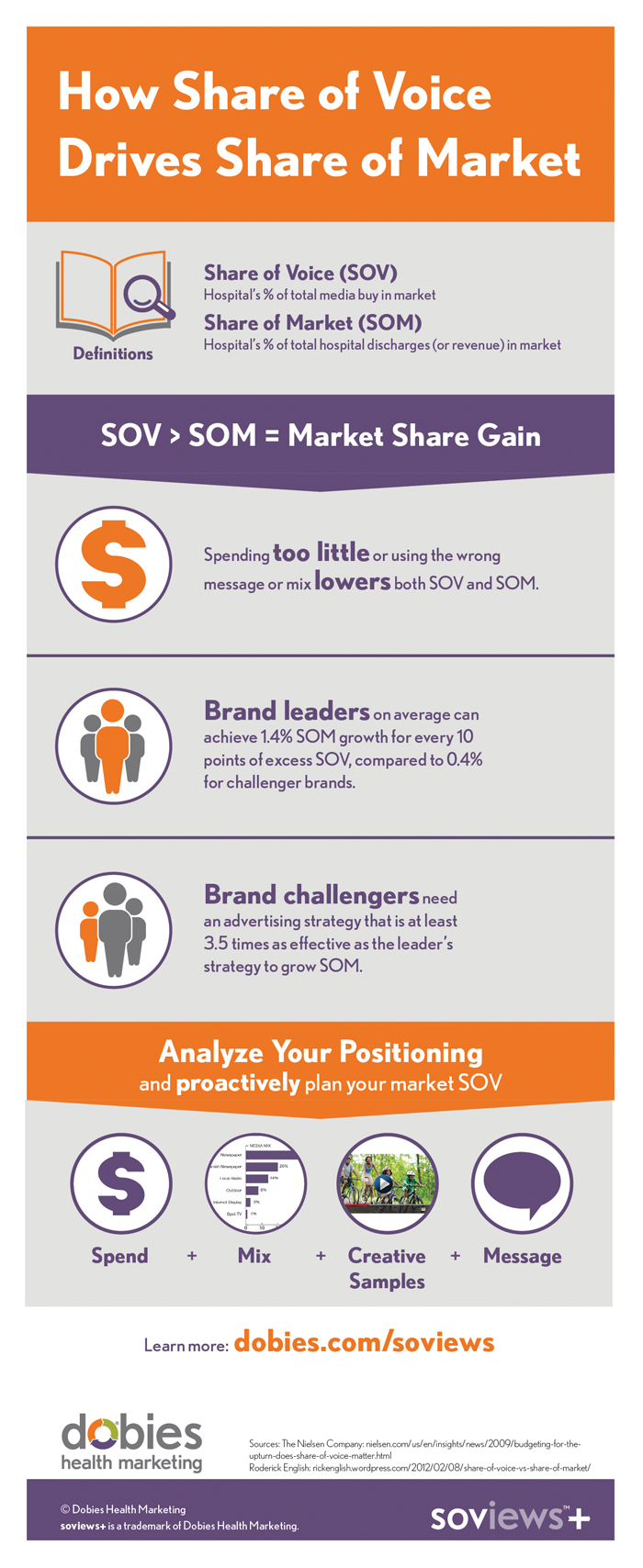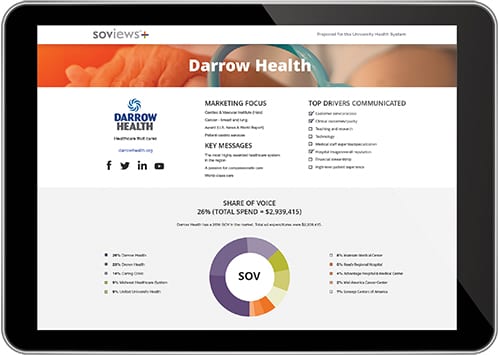In Hospital Marketing, There Is No Substitute for Accurate Knowledge
 The consumer-driven demand for goods, products and services is pervasive in today’s economy, and the service of healthcare is not immune. Rather, it is fully immersed in transforming itself into a competitive, consumer-centric industry.
The consumer-driven demand for goods, products and services is pervasive in today’s economy, and the service of healthcare is not immune. Rather, it is fully immersed in transforming itself into a competitive, consumer-centric industry.
Theodore Levitt, renowned for his marketing and branding excellence and considered by many to be the founder of modern marketing, offers this advice:
“For companies to ensure continued evolution, they must define their industries broadly to take advantage of growth opportunities. They must ascertain and act on their customers’ needs and desires, not bank on the presumed longevity of their products.”
In other words, you better understand your customer… or your competitor will.
During my career as Vice President of Marketing for a large academic medical center, we were considered a marketing machine — owning share of voice, growing market share each year and outpacing the competition in customer engagement. What drove that success? The answer is simple: we knew our customers. Now, as the President and Chief Strategy Officer for a healthcare branding, marketing and advertising firm, I go to great lengths to ensure our clients—and of course, our own team—understand the customer in ways that inform and ensure adoption of a customer-centric service philosophy.
Here are three things every hospital marketer should know to ensure a customer-centric marketing approach:
1. Know the customer journey
When I led the marketing team at the academic medical center, everyone on my team was required to “round” patient units each month—in fact, we had someone from marketing rounding every day on the units we had “adopted.” People would ask, why are marketing people rounding at the bedside? The answer: to ensure everyone in charge of marketing and communication for the hospital clearly understood the customer journey (where they came from, how they got there, what their experience has been.) It’s also a valuable way to bring back knowledge of the customer’s wants, needs and desires (how to make the customer’s stay better). It was important to me that everyone marketing hospital services understood what we did, how we did it and how the customer was experiencing it.
2. Know your voice
It is critical to understand what the competition is saying to your customers, how that message is communicated and how often it is communicated. Knowing how your share of voice compares to competitors is very important, but alone it is not enough. Share of market differential matters significantly because increasing excess share of voice is essential to driving market share growth. In fact, for every 10 points your share of voice exceeds your share of market, you can expect 0.5 percent greater market share growth. Competitive insights are critical to defining a strong market position. With a firm understanding of the competitive landscape, you’ll gain insights that empower you to address your own voice more strategically – as illustrated in the following video:
3. Know what you are not
Healthcare marketing does not sell widgets—there are no products on shelves and no inventory to report. We sell the promise of care, treatment and good health. Levitt also coined the term marketing myopia to describe the pitfalls that come into play when a business strictly views marketing from the standpoint of selling a specific product, rather than fulfilling customer needs. As a healthcare marketing executive, I believe marketing teams should focus on who the customer is and what they should be experiencing by emphasizing their promise (benefit), not their product (feature).
Top 3 Things You Should Know for Consumer-Centric Hospital Marketing Click To TweetIn the ever-changing industry of healthcare, reaching the right audience with the right messages has become essential and requires keen understanding and insight. Hospital marketers cannot afford to miss with their message. Know your customer, know your voice and know what you are not.
As Lee Iacocca once said, “There is no substitute for accurate knowledge.”
About the Author
 Julie Amor, President and Chief Strategy Officer for Dobies Healthcare, has 30 years of experience elevating healthcare brands. Share your thoughts with her by tweeting @DobiesGroup, connecting with us on LinkedIn, or by commenting on our Facebook page.
Julie Amor, President and Chief Strategy Officer for Dobies Healthcare, has 30 years of experience elevating healthcare brands. Share your thoughts with her by tweeting @DobiesGroup, connecting with us on LinkedIn, or by commenting on our Facebook page.

 As healthcare industry leaders look to increase efficiency, grow market share, improve outcomes, and meet consumer expectations for
As healthcare industry leaders look to increase efficiency, grow market share, improve outcomes, and meet consumer expectations for 
 The
The  Dobies Health Marketing started in 1992 with the goal of creating healthier brands for our clients. Twenty-five years later, we are proud to serve as a thought leader and trusted strategic consult in the ever-changing
Dobies Health Marketing started in 1992 with the goal of creating healthier brands for our clients. Twenty-five years later, we are proud to serve as a thought leader and trusted strategic consult in the ever-changing  No other industry has seen quite the magnitude of change as healthcare. Today, nearly every facet of the industry is radically transforming as our core business focus shifts from illness to prevention. Providers and vendors are forced to transform their practices as they secure a meaningful role in the industry.
No other industry has seen quite the magnitude of change as healthcare. Today, nearly every facet of the industry is radically transforming as our core business focus shifts from illness to prevention. Providers and vendors are forced to transform their practices as they secure a meaningful role in the industry.


 When we present a strategic marketing plan to a hospital, for example, we start with a simple statement that has enormous value. It sets the tone for the entire data-driven document:
When we present a strategic marketing plan to a hospital, for example, we start with a simple statement that has enormous value. It sets the tone for the entire data-driven document: